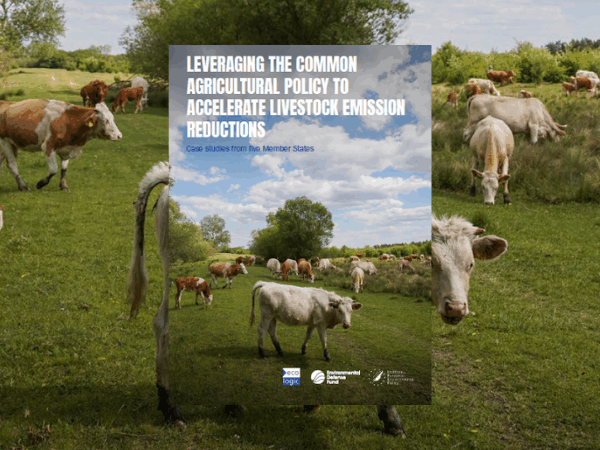AUTHORS: Kaley Hart, Laure-lou Tremblay, Louis Durrant (IEEP) and Aaron Scheid, Julia Pazmino, Antonia Riedel (Ecologic)
The next CAP can unlock low-emission farming by scaling up innovation, farmer networks, and targeted incentives for sustainable livestock.
Livestock farming is responsible for around 65% of agricultural greenhouse gas (GHG) emissions in the EU, primarily methane (CH₄) from enteric fermentation and nitrous oxide (N₂O) from manure management. With agricultural emissions projected to make up an even greater share of Europe’s total emissions by 2040, reducing emissions from livestock is essential if the EU is to meet its future climate targets.
A new study, commissioned by EDF Europe and carried out by the Institute for European Environmental Policy and the Ecologic Institute, takes an in-depth look at how the Common Agricultural Policy (CAP) can be used to support the transition to a low-emission livestock sector.
The report analyses the 2023–2027 CAP Strategic Plans (CSPs) of five Member States, including Belgium-Flanders, France, Hungary, Poland, and Spain, to assess how CAP interventions are currently addressing livestock emissions. It combines:
- A desk-based review of EU and national data,
- Case studies of selected CAP interventions,
- And interviews with managing authorities, farm advisors, and other stakeholders.
The study identifies both direct interventions, such as eco-schemes promoting methane-reducing feed additives, and indirect interventions, including support for extensive grazing systems or improved manure management. It also highlights the financial, technical, and governance barriers that limit the effectiveness and uptake of these measures.
Despite the CAP’s significant budget and potential, the report finds that current efforts remain minimal:
- Very few interventions directly target emissions from livestock,
- Uptake among farmers is low,
- And coupled income support often maintains livestock numbers rather than incentivising emission reductions.
However, there are examples of good practice, such as feed management schemes in Belgium-Flanders and investment support for manure management in Hungary and Spain, which could be scaled up and replicated.
To align the CAP with the EU’s climate ambitions, the report calls for:
- Targeted financial incentives for low-emission livestock practices,
- Stronger knowledge infrastructure for managing authorities, farmers and advisors
- Cooperation across governance levels to streamline responsibilities,
- And coherence between CAP funding and wider EU climate policies, including the CRCF and CSRD.
Together, these steps can help transform the CAP into a key driver of emission reductions in the livestock sector, ensuring that agriculture contributes its fair share to EU climate neutrality by 2050.

